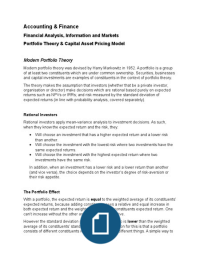Lecture notes
Investment Portfolio Analysis & the Capital Asset Pricing Model - Detailed Lecture Notes
- Institution
- University Of Southampton (UOS)
Lecture notes on portfolio analysis and the capital asset pricing model in the context of investment risk and return, with added detail.
[Show more]



